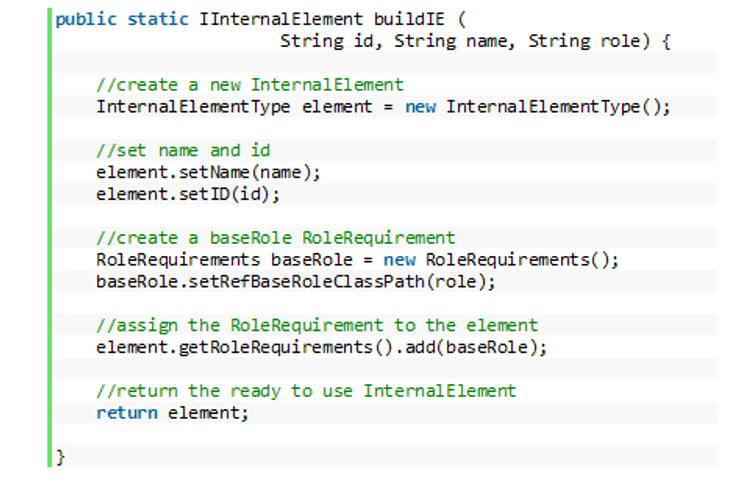Overview of Part I
Part I of this book is dedicated to software developers and architects and provides recommendations how to interact with AutomationML in own software applications. There are different ways to deal with AutomationML, starting from the pure XML DOM model up to high-level class models that encapsulates the AutomationML internals from the programmer.
- Chapter 3 provides a deep insight into the development of software for the application of AutomationML in different settings. After an introduction about the application of different layers in software implementation context, we will introduce the basic technologies and methods that may be used to work with XML based data models.
-
Chapter 4 provides guidance for programming AutomationML export and import software interfaces. The importing software interface (Importer) therefore needs an assignment strategy and a mapping rule for the semantically unique transformation of the AutomationML object into the target engineering tool in order to ensure a lossless data transfer. By means of a basic software architecture we show how the transformation works and describe which concepts and strategies can be used to successfully implement export/import interfaces. Finally, we also suggest some methods for handling meta information and object identifiers for a seamless data exchange.
-
Chapter 5 explains the AMLTestCenter as a commercial software service that offers rule-based verification of AML documents against general rules on the one hand, and against domain specific rules on the other hand. This is demonstrated by means of rules for testing AAS conformity of AML models in the context of Industry 4.0.
Chapter 3
Ronald Rosendahl (consultant), Ender Yemenicioglu (inpro)
AutomationML Software Development
Chapter 4
Josef Prinz, Ender Yemenicioglu (inpro), Rainer Drath (Pforzheim University of Applied Sciences)
AutomationML Import and Export Programming
Chapter 5
Jan-Wilhelm Blume, Ljiljana Stojanovic (Fraunhofer IOSB)
